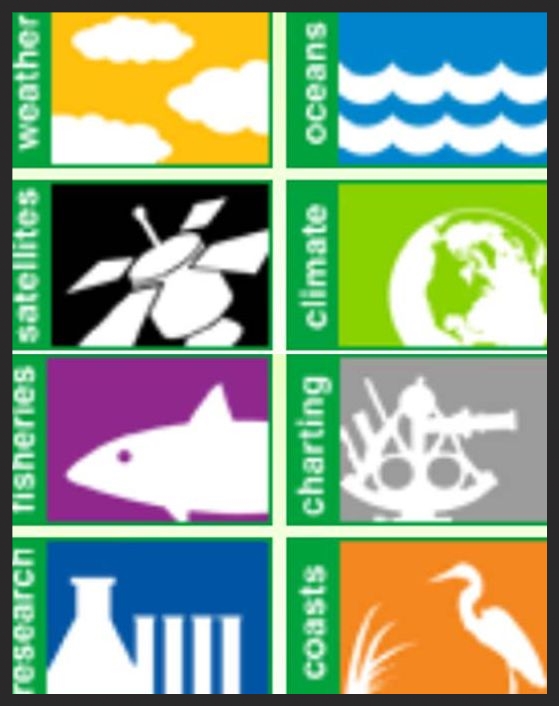State Success Story
The Neskowin effort is a great example of collaboration and determination related to addressing increasing coastal erosion. It represents a community who needed help but was also willing to roll up its sleeves and go to work. The effort exemplifies effective "ground up" teamwork and solid relationship building across organizations.To learn and read more,click here.
|

At the Agencies
The Bureau of Ocean Energy Management (BOEM) has signed an agreement authorizing the U.S. Army Corps of Engineers, Charleston District (USACE), and Horry County, South Carolina, to use up to one million cubic yards of sand from federal waters to renourish the Garden City and Surfside Beach areas of Horry and Georgetown Counties. The project area, known as Reach 3, is part of the Myrtle Beach Federal Shore Protection Project. BOEM and partners expect construction to begin in late 2016.
Read more
Scientists from the Bishop Museum and NOAA have published a description of a new species of butterflyfish from deep reefs of the
Papahānaumokuākea Marine National Monument in the remote Northwestern Hawaiian Islands. The study was published today (Sept. 6) in the scientific journal
ZooKeys.
Read more
On September 13, NOAA released its final Ocean Noise Strategy Roadmap, which will guide the agency in more effectively and comprehensively managing ocean noise effects on marine life during the next decade.
Read more
|

In the News
The National Science Foundation has awarded Rutgers University-New Brunswick $2,999,055 in federal funding to research the risks of climate change on coastal communities, and their resilience in the face of intense storms and sea level rise, U.S. Sens. Bob Menendez and Cory Booker (both D-N.J.) announced last week.
Read more
The Maryland Board of Public Works approved a $200,000 grant today (Sept. 7) to reduce pollution and improve water quality by upgrading a sewage treatment plant in Dorchester County. The Board is composed of Governor Larry Hogan, Treasurer Nancy K. Kopp and Comptroller Peter Franchot. "The Twin Cities Wastewater Treatment Plant upgrade is a smart investment and great news for Maryland communities and citizens of the Chesapeake Bay region. The Maryland Department of the Environment thanks Governor Hogan for his leadership on this environmental priority," said Maryland Secretary of the Environment Ben Grumbles. "Reducing nutrient pollution to our waterways will help us to green and grow the state's economy and lead in the race to protect and restore Chesapeake Bay watersheds."
Read more
A new study recently published in the journal
Global Biogeochemical Cycles
offers clues to the potential impact of ocean acidification deep-sea, shell-forming organisms.
This collaborative research, involving contributions from the National Oceanography Centre and led by the Institute of Geosciences at Kiel University, (CAU), found that almost a quarter of the deep sea, shell-forming species analyzed already live in seawater chemically unfavorable to the maintenance of their calcareous skeletons and shells. More than a hundred groups of marine organisms from a range of environments worldwide were included in this comprehensive study, including sea urchins, sea stars, coralline algae and snails.
Read more
|

In the States and Regions
East Coast
Duval County beach residents and visitors will see work start on local beaches this weekend that will improve the coastal area's resiliency and reduce risk to infrastructure. The Duval County Shore Protection Project will place sand on seven miles of eroded beaches, including Jacksonville, Neptune and a portion of Atlantic Beach. The beach renourishment project will widen the beach berm between 20 to 60 feet, and raise the elevation of the beach by about 3 to 5 feet.
Efforts to reduce Lake Okeechobee water discharges befouling Florida's coasts took a key step forward Thursday with Senate passage of a bill that would authorize nearly $2 billion for Everglades restoration. By a 95-3 vote, the Senate passed the Water Resources and Development Act, which includes $1.95 billion for the Army Corps of Engineers to carry out the Central Everglades Planning Project.
A new offshore directional wave buoy is reinforcing NASA's efforts to manage, protect and renourish the Wallops Island shoreline, which protects some $1.2 billion in federal and state assets. The new wave buoy is deployed 14.5 km offshore in 55 feet of water, and contains high-resolution water level sensors that collect wave climatology and water level information used in evaluating future erosional hot spots and areas of nearshore shoaling.
Gulf Coast
The U.S. Department of Agriculture announced a three-year, $328 million restoration strategy for Gulf of Mexico coastal parishes and counties Monday in response to damage from the 2010 Deepwater Horizon disaster. The strategy amounts to a road map for USDA's Natural Resources Conservation Service work in the coastal parishes and counties, although specific projects will be selected through cooperation with five Gulf states, federal agencies and landowners.
The U.S. Senate passed a major infrastructure bill Thursday (Sept. 15) that could spur along several projects to help Louisiana navigate the delicate bond between its cities, towns and countrysides, and its rivers, bayous and the Gulf of Mexico. The Water Resources Development Act of 2016 sailed through the upper chamber on a 95-3 vote. Louisiana Sens. David Vitter and Bill Cassidy, both Republicans, supported it. The vote is especially poignant in light of the massive flooding that inundated much of the Comite and Amite river basins in August, damaging more than 60,000 homes and killing 13 people.
West Coast and Pacific Islands
A new study showed that as oceans warm, physical forces like wave strength and water flow influence which reefs thrive and which die. The study, led by Justin Rogers, a postdoctoral researcher at Stanford University's Environmental Fluid Mechanics Laboratory, and published this week in a report in the journal Limnology and Oceanography, offers new insight into how climate change will affect reefs on a local level.
Read more
A collaboration of university researchers, government agencies, and private sector groups released today a next-generation climate modeling dataset with improved local-scale climate projections covering the 21st century for a region from northern Mexico to southern Canada.
Great Lakes
The Michigan Department of Environmental Quality is awarding $158 million in low-interest loans to 15 projects for improvements to water system infrastructure around the state. The loans are part of the state's 30-year
Water Strategy for the protection and use of the state's water resources. "It's essential to keep our waters clean from sources in groundwater, lakes and rivers to end-of-pipe delivery points to sustain the ecosystem and provide high-quality resources to our citizens," said Jon Allan, director of the state's Office of the Great Lakes.
Read more
|
Announcements & More
The U.S. Environmental Protection Agency announced $4,637,000 for eight grants focused on coastal watershed efforts in southeast Rhode Island and Massachusetts. The projects selected for grant funding are intended to identify, test, and promote effective new regional approaches in critical areas such as water monitoring, watershed planning, nutrient and/or septic management, and resilience to climate change.
These projects are funded through EPA's Southeast New England Program (SNEP). Since its launch in 2014, SNEP's mission has been to seek and adopt transformative environmental management. Grantees have developed projects that share innovative solutions and foster collaborative problem-solving and new approaches. One of the goals of the Southern New England Program is to make connections across projects to ensure that restoration strategies are comprehensive and sustainable, that they are informed by input from key stakeholders, and that they are connected to the economies and enhance the ecosystem services that support coastal watershed communities. The program's geographic area encompasses the coastal watersheds from Westerly, Rhode Island to Chatham, Massachusetts, and includes Narragansett Bay and all other Rhode Island coastal waters, Buzzards Bay, and southern Cape Cod as well as the islands of Block Island, Martha's Vineyard, and Nantucket. To read more, please
click here
.
OneNOAA Science Seminars, 2016
Date & Time: October 4, 2016 1:00 pm - 2:00 pm ET
Date & Time: October 5, 2016 12:00 pm - 1:00 pm ET
Title: Facilitating Collaborative Public Decisions: A video-based training tool
Date & Time: November 10, 2016 1:00 pm - 2:00 pm ET
Seminars are open to the public. For remote access, location, abstracts and more, visit the OneNOAA Science Seminar Calendar at:
http://www.nodc.noaa.gov/seminars/
Seminars are posted in Eastern Time and subject to changes without notice; please check the web page for the latest seminar updates.
Events & Webinars
October 4, 2016
October 5 -7, 2016
October 26 -27, 2016
December 10 -15, 2016
|
|